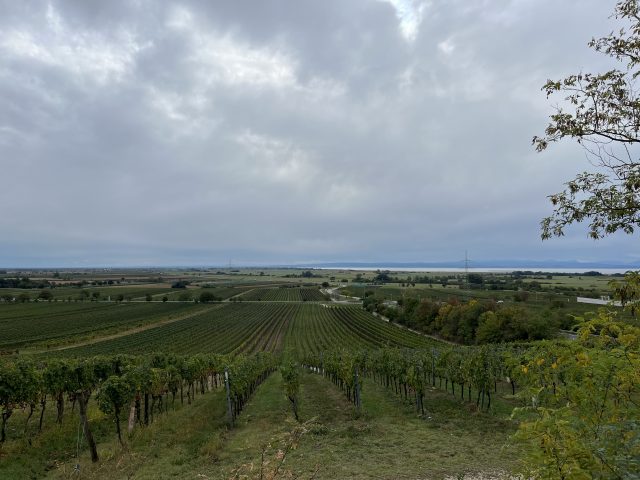This website uses cookies so that we can provide you with the best user experience possible. Cookie information is stored in your browser and performs functions such as recognising you when you return to our website and helping our team to understand which sections of the website you find most interesting and useful.
Austrian producers expect ‘very special’ 2022 vintage
Though the summer heatwave posed challenges, producers in Neusiedlersee DAC, Austria are optimistic for the 2022 vintage.

Like much of Europe, Austria experienced high temperatures this summer as the mercury remained above 30°C for much of July and August in Vienna. Just south, Lake Neusiedl is still, despite subsequent rainfall, only approximately 1.5 metres deep on average, as opposed to its usual depth of 1.8m. Given the high temperatures of the growing season, the 2022 vintage could be on a par with that of 2018 – another hot, dry year.
Andreas Nittnaus of Weingut Gebrüder Nittnaus in Gols is one of a new generation of young winemakers championing Zweigelt in Burgenland. With a vineyard area of 112 hectares, 60% of his vines are producing red grapes, with Zweigelt being the most prolific variety. He told db that the outlook from this year was positive: “This year’s harvest was actually very special. It was challenging but also very interesting to see how each vineyard & each grape variety reacts to the dryness of the soil we have faced. Vintage 2022 shows that old vines are big advantage in such a dry summer. In general, 2022 is very promising with a good tannin structure & the wines are already showcasing a beautiful fruitiness.”
Franz Schneider of Artisan Wines echoed this sentiment, calling this year’s harvest “surprisingly good”.
“The summer heat has mainly impacted the development & size of the berries. It has accelerated the growth of the berries & the drought/dryness has slowed it down & the berries stayed smaller than usually. Luckily, this was great for our red grape varieties.”
“Moreover,” he continued, “we had to work with each vineyard in a more individual way. Each vineyard had to be harvested at a different time. This was probably the biggest change and challenge to adapt to this new way & longer harvest. We definitely learned to adapt to the different grades of maturity of the grapes in each vineyard, which was a great experience!”
Fortunately, the window for picking Zweigelt is relatively wide: when picked earlier it displays more of the delicate characteristics of St. Laurent, with its moderate tannins, when picked later it veers more towards Blaufränkisch with firm tannins and riper flavours. “With Zweigelt,” Nittnaus explained, “the quality level is determined by the growing location and the yield – not when you harvest…it’s better to pick a good grape early than an average grape late.”
Expectations are also good for other red varieties, including St. Laurent and Blaufränkisch, as well as the whites, like Grüner Veltliner and Welschriesling, that Austria is arguably better known for.
Given this year’s scorching summer, it is difficult to avoid the conclusion that climate change could cause serious problems for producers in Neusiedlersee DAC in the near future. However, Nittnaus believes that winemakers in the region are adaptable: “I am confident to say that for us, or our region, there are more opportunities than risks. We are generally located in cool climate & our soils are known for good water storage. I think for us it is similar to England, we can only start experimenting more & more with different conditions.”
Schneider also pointed out that the loss of water from the lake was not a major concern: “Water level fluctuates, that’s how it works with a shallow lake!”
To discover more about why Zweigelt in particular is so popular among winemakers in Neusiedlersee DAC, click here.

